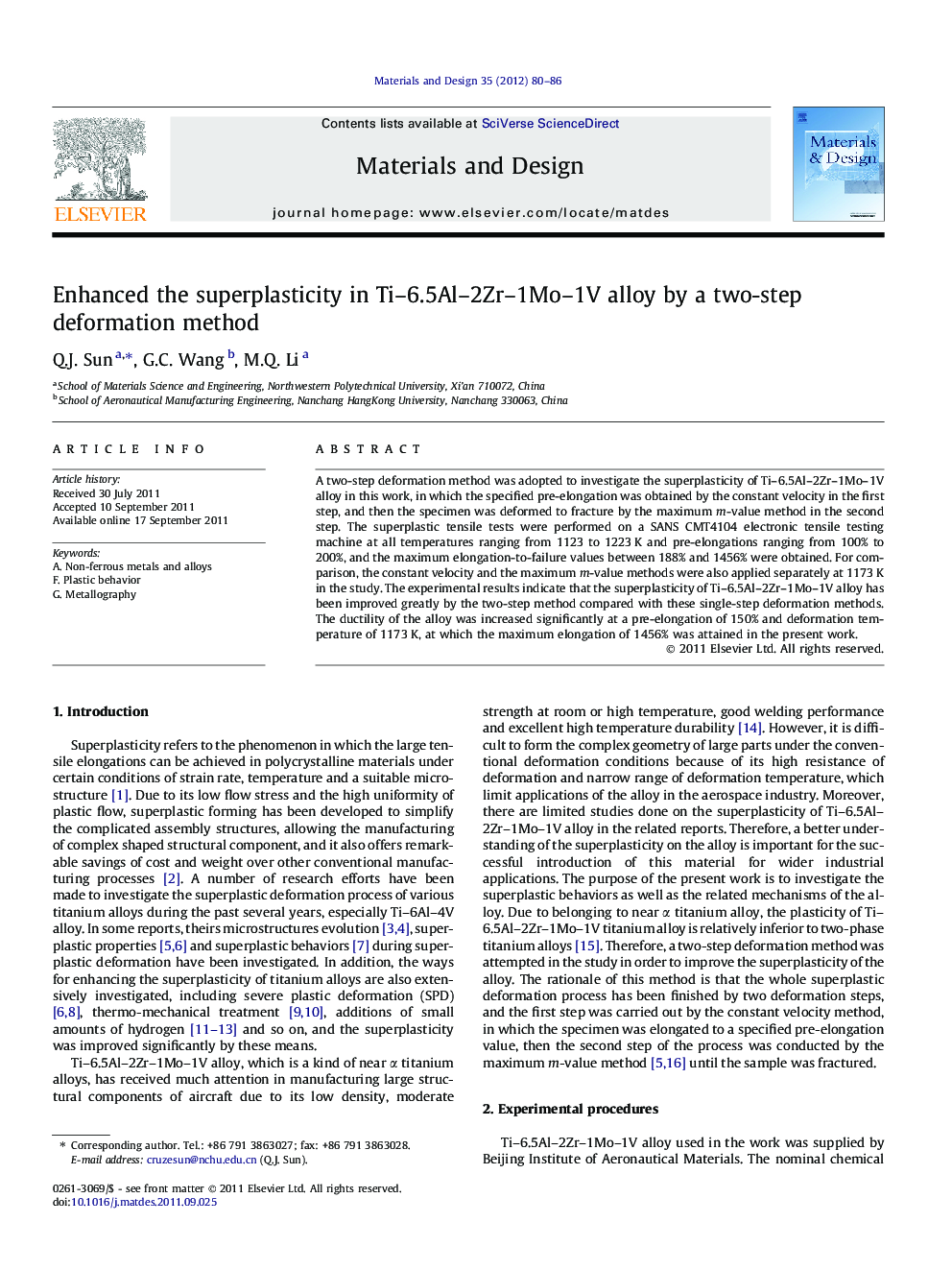| Article ID | Journal | Published Year | Pages | File Type |
|---|---|---|---|---|
| 830914 | Materials & Design (1980-2015) | 2012 | 7 Pages |
A two-step deformation method was adopted to investigate the superplasticity of Ti–6.5Al–2Zr–1Mo–1V alloy in this work, in which the specified pre-elongation was obtained by the constant velocity in the first step, and then the specimen was deformed to fracture by the maximum m-value method in the second step. The superplastic tensile tests were performed on a SANS CMT4104 electronic tensile testing machine at all temperatures ranging from 1123 to 1223 K and pre-elongations ranging from 100% to 200%, and the maximum elongation-to-failure values between 188% and 1456% were obtained. For comparison, the constant velocity and the maximum m-value methods were also applied separately at 1173 K in the study. The experimental results indicate that the superplasticity of Ti–6.5Al–2Zr–1Mo–1V alloy has been improved greatly by the two-step method compared with these single-step deformation methods. The ductility of the alloy was increased significantly at a pre-elongation of 150% and deformation temperature of 1173 K, at which the maximum elongation of 1456% was attained in the present work.
► The superplasticity of Ti–6.5Al–2Zr–1Mo–1V alloy was improved by the two-step method. ► The optimum superplastic deformation temperature is 1173 K. ► The maximum elongation of 1456% was obtained by the two-step method.
